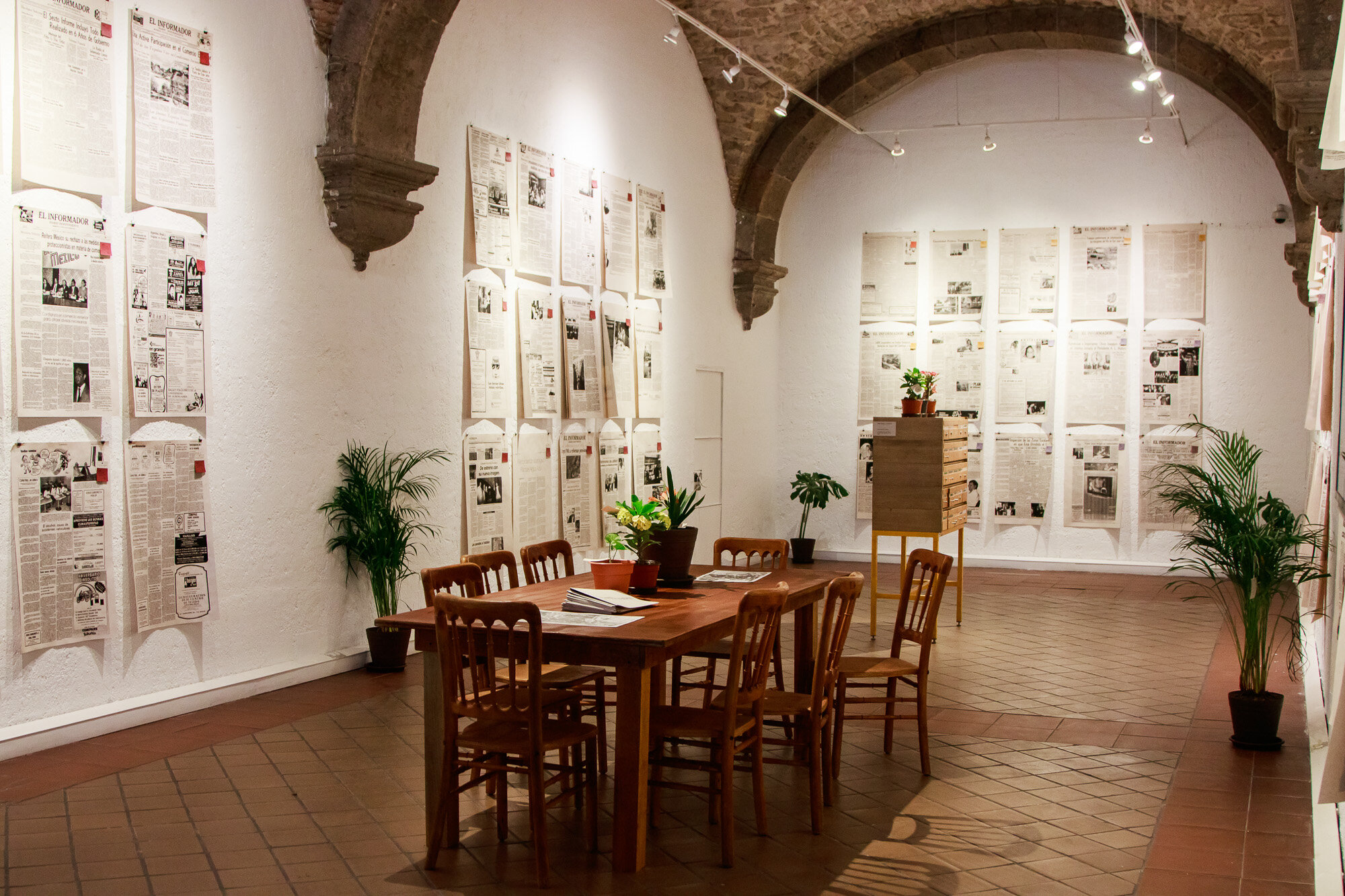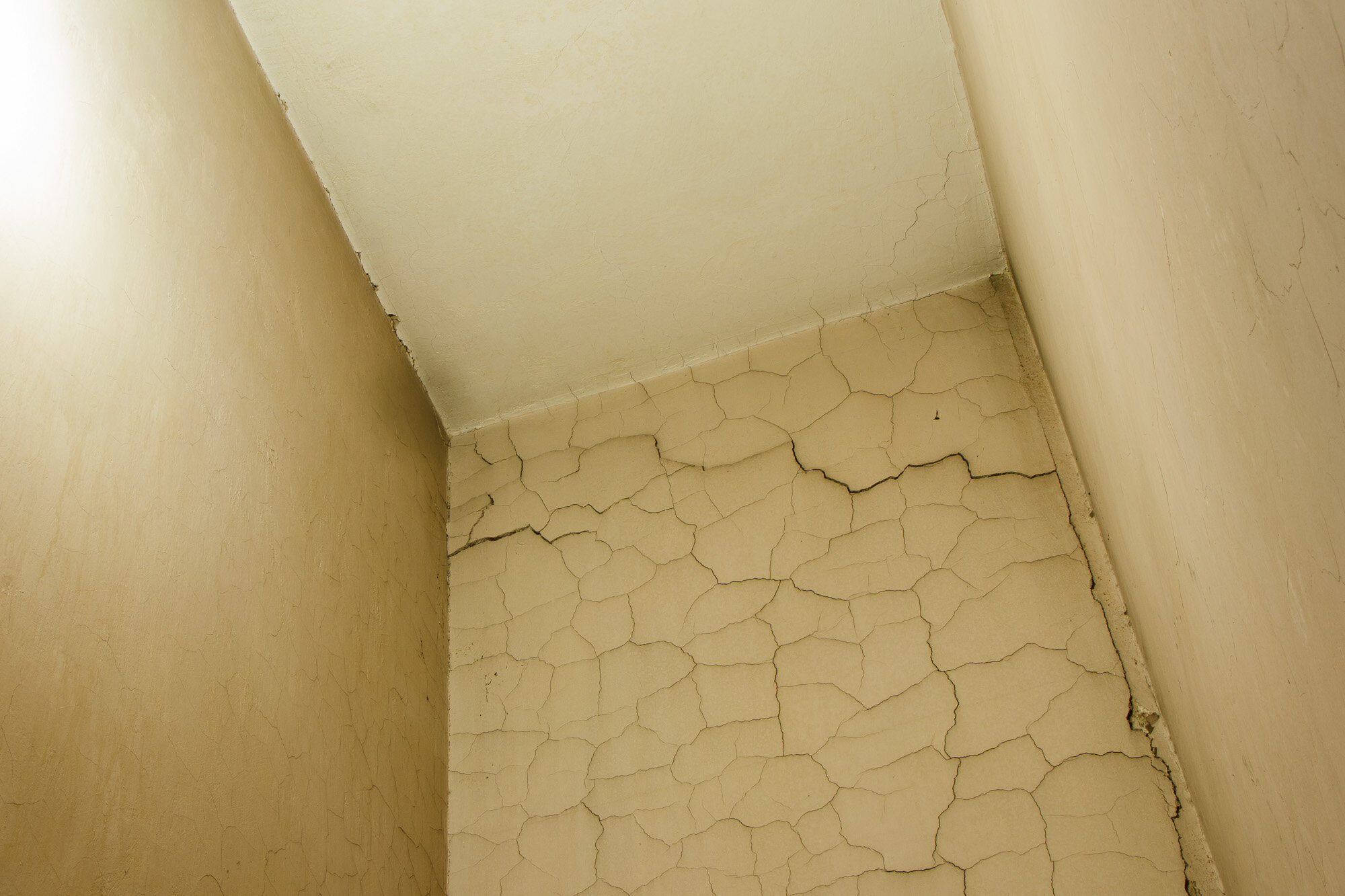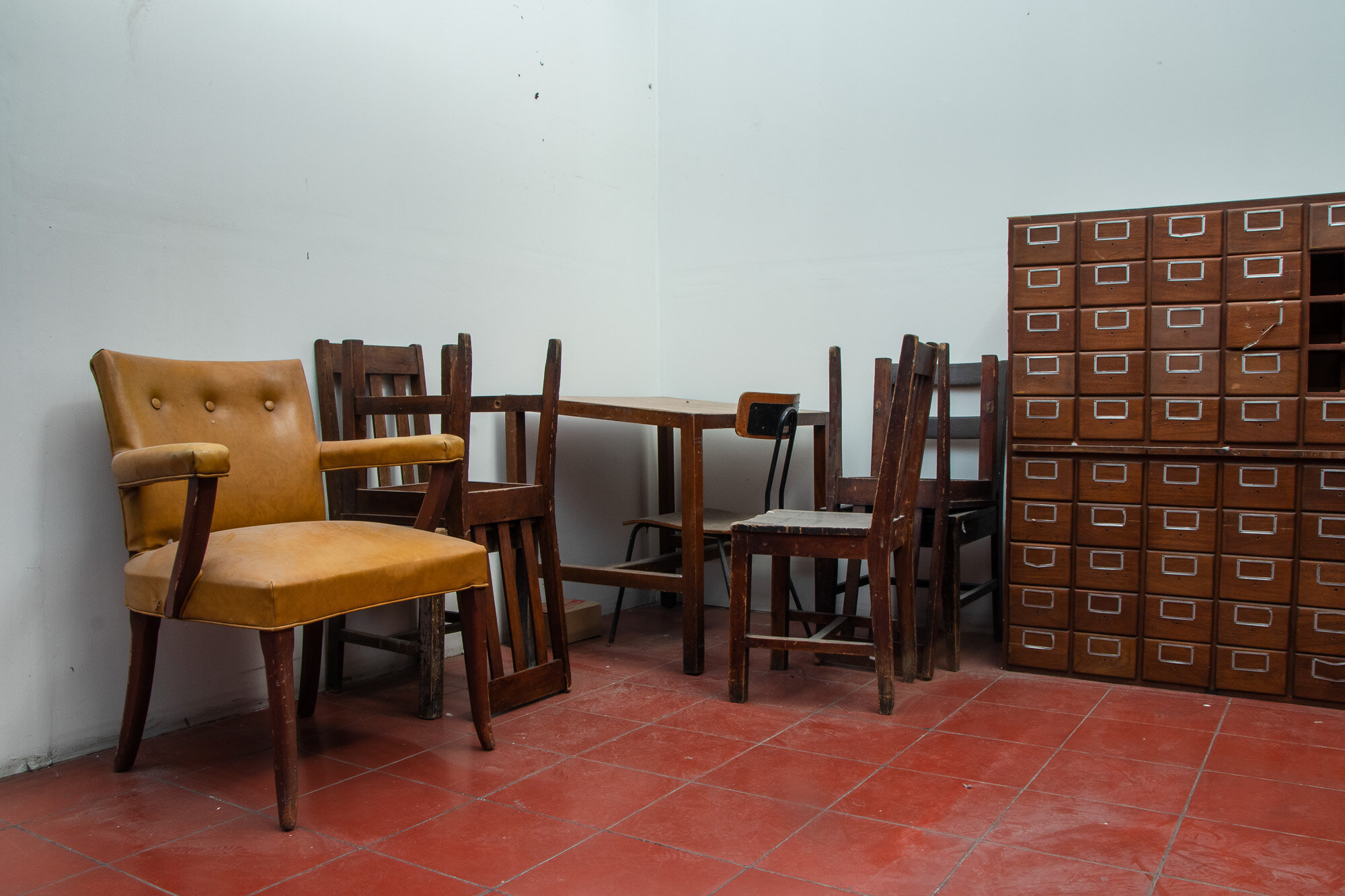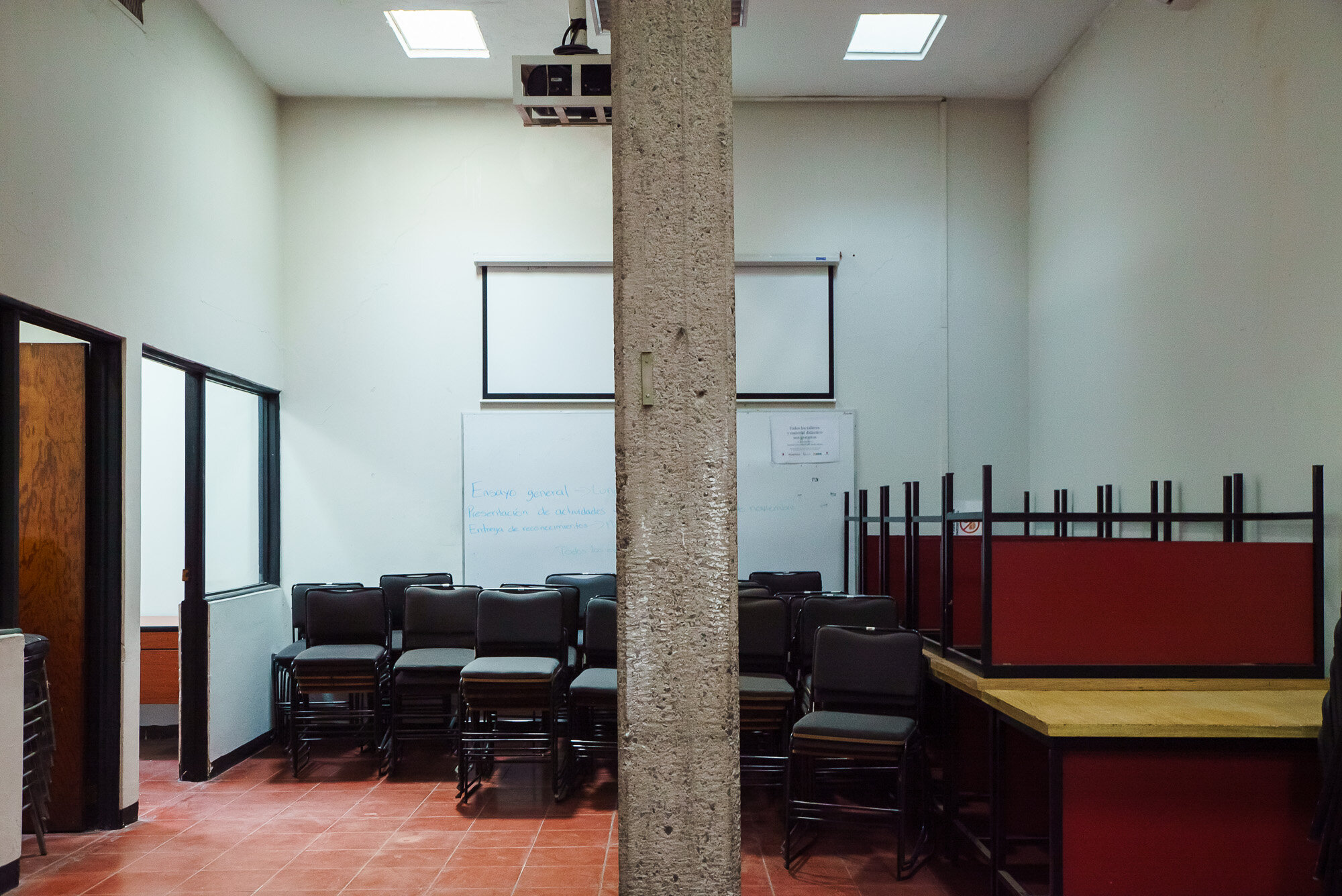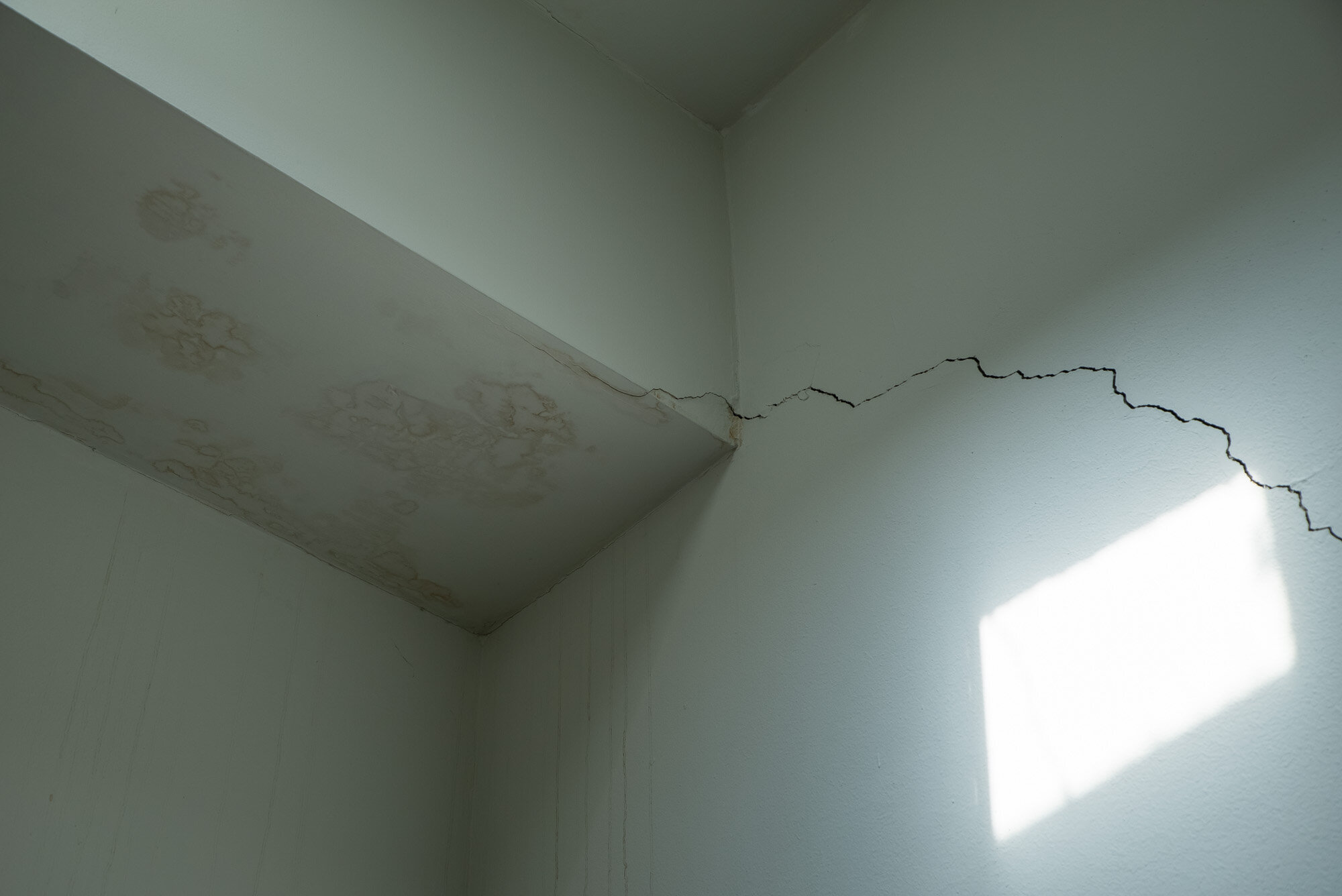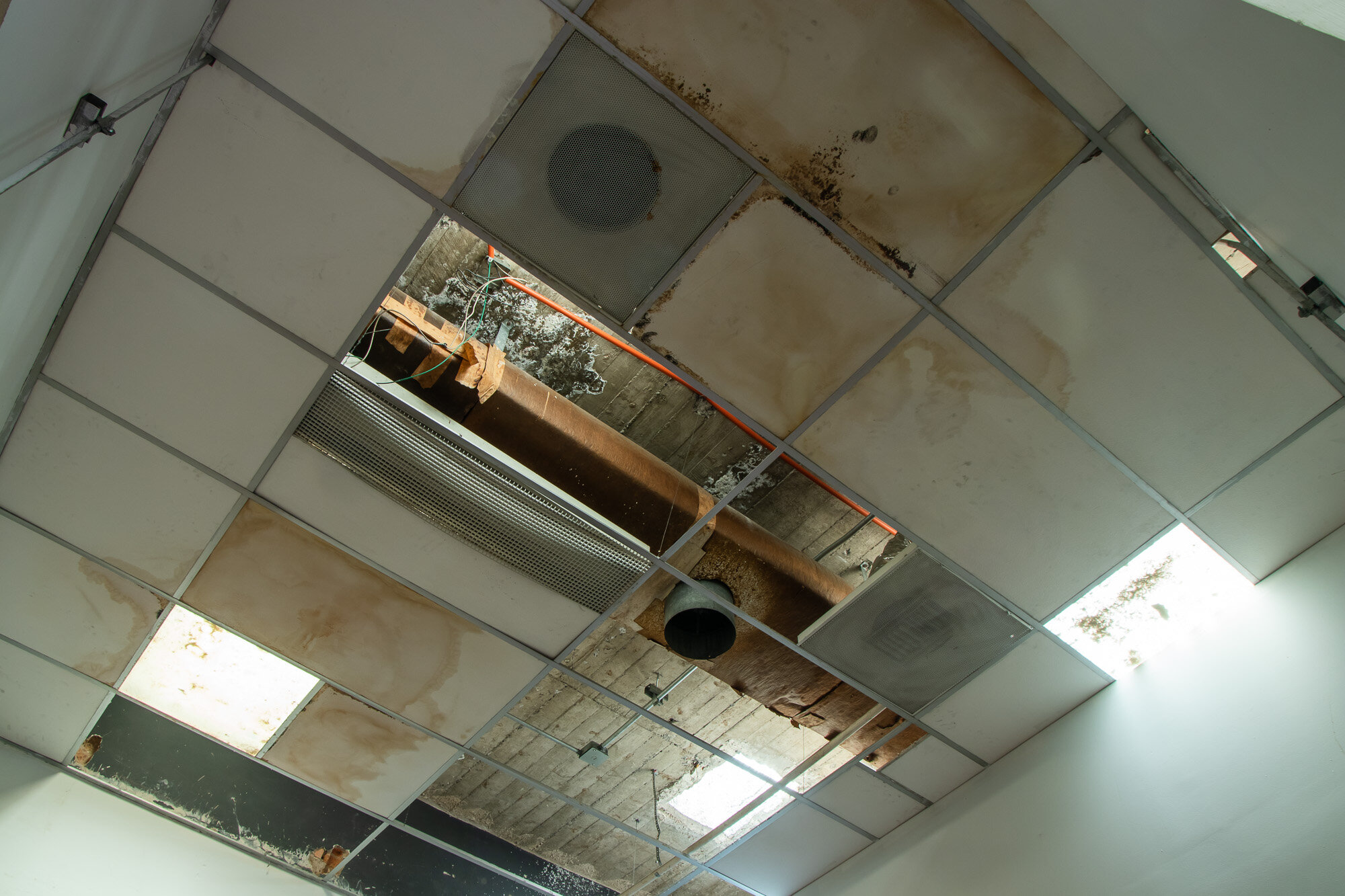ABOUT THE PROJECT
The Living Library is an artistic research project that reanimates a newspaper collection kept in the main tower of the former Jalisco State Public Library (in Guadalajara, Mexico). This project seeks to restitute its function to the building sheltering this archive—lost since its closing in 1995—by deploying, critically reading, and activating its newspapers.
THE LIBRARY
The former Jalisco State Public Library’s building is a testimony of the failure of modernizing projects in certain Latin American cities. In Guadalajara, this failure is traceable in the stories of desiccation and urbanization of Lake Agua Azul; in the downfall of several urban activation initiatives (a park, a cultural circuit, a real estate development, among others). The failure is also traceable in how the structure has been fractured when hit by an earthquake; in how the library has not been able to shelter, preserve, and spread knowledge the way it was intended to.
THE COLLECTION
The journals kept in the former site of the Jalisco State Public Library form a complete lot of facsimiles donated by the newspaper El Informador (The Informer.) By means of archival research, Living Library has curated a selection of journals containing information on the different lives and migrations of this library’s collections, its lacustrine land and those who have intervened in it.
To read our Editorial and find our complete Collection click here.
LIVING LIBRARY ACTIVATIONS
Installation of the Living Library at the former Carmelite Convent, Guadalajara
To visit the photo gallery click here.
Living Library activations
To visit the photo gallery click here.
Living Library activations
Remembering the Jalisco State Public Library with Father Tomás de Hijar Ornelas
The anatomy of books with Elian Orozco
THE EXCAVATORY FABULATION
Excavatory Fabulation Laboratory
This project is part of a transdisciplinary co-research lab where the remnants of the library’s material structure are explored, reconnoitered, excavated, and interpreted. The library was addressed as a place full of life, beginning with a critical appropriation of certain archeological, historiographical, and museological methodologies.
To visit the photo gallery click here.
Archaeological Dig
Exploration of the material layers forming the ground level floor of the Jalisco State Public Library’s building, its furniture and objects.
To visit the photo gallery click here.
MAP
Map of the different transformations of the area where the Jalisco State Public Library still stands.
THE TEAM
Creative direction: Adriana Salazar
Excavation, co-research and activation: Luz Livier Cuéllar Ruvalcaba, Bernardo Camacho Ornelas y Mayra Vineya Huerta Salcedo
INAH Jalisco collaboration: Igor Quintana, Elián Orozco
Photography and video: Ana Cristina Rodríguez
Graphic design and web development: Nobara Hayakawa
English translation: José Luis Rico
Production: Ana de Loera
SPONSORS
Changing Places 19/20 | Siemens Stitftung | Goethe Institut Mexico | Jalisco State Arts Council | El Informador








